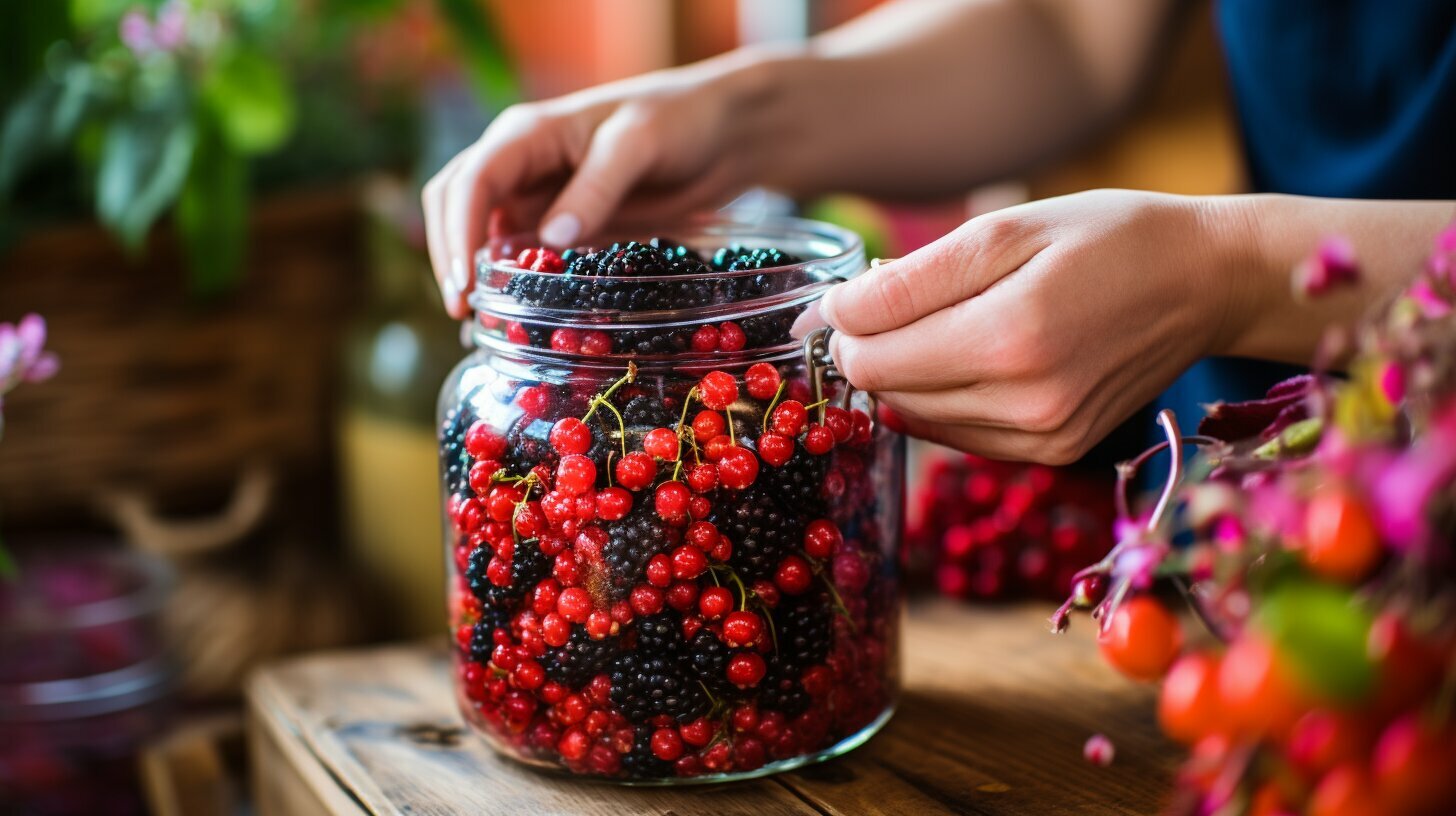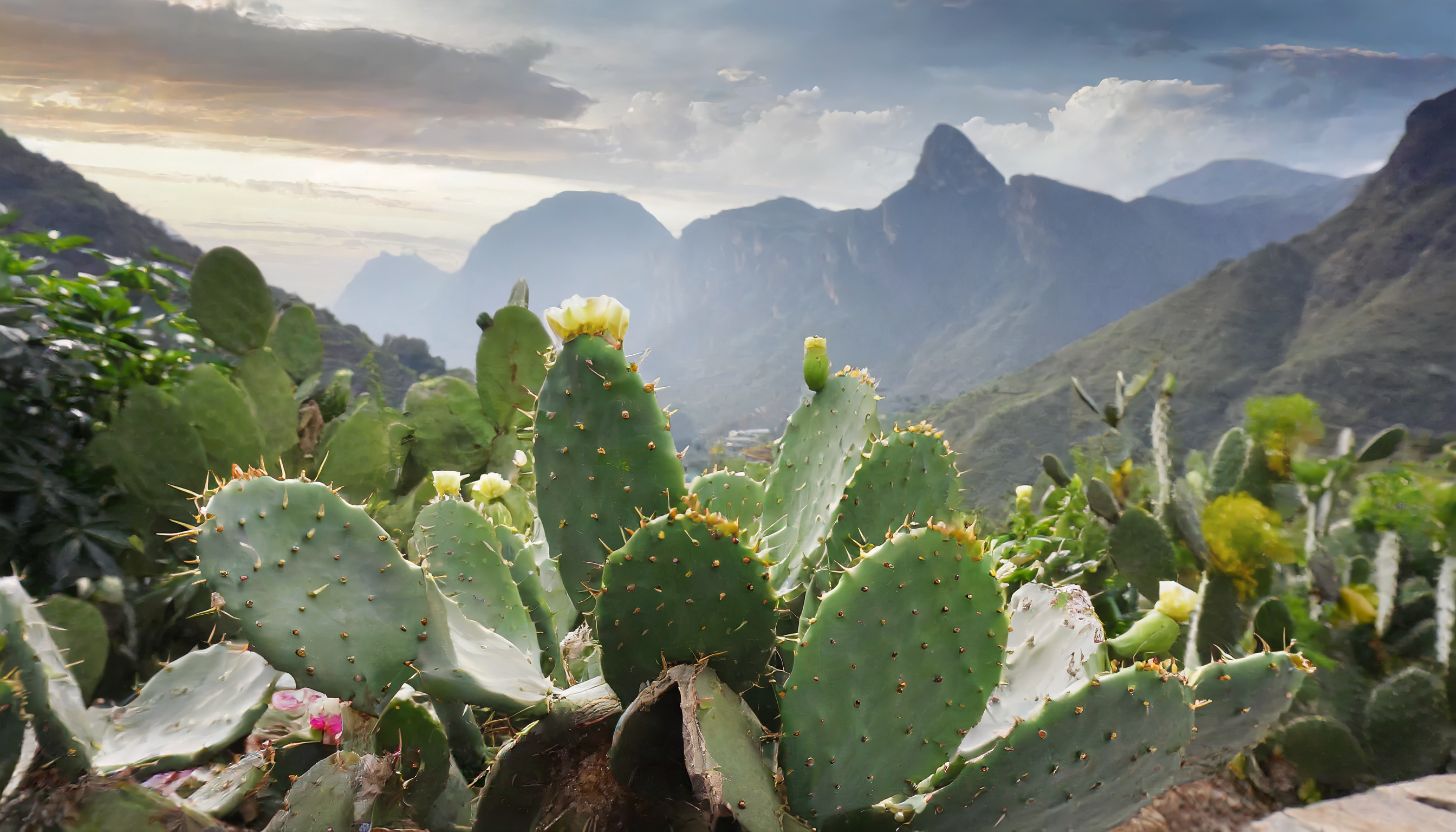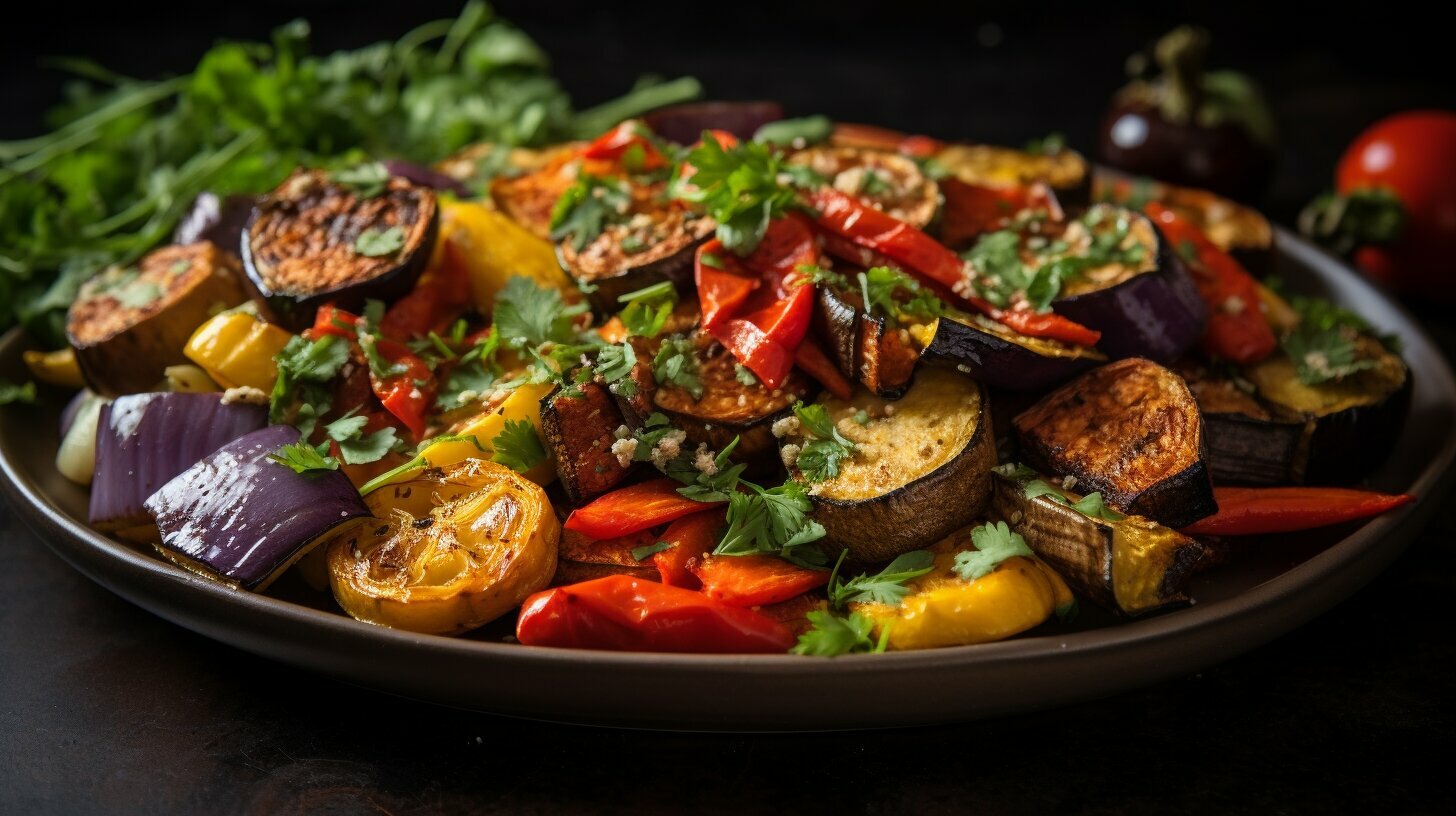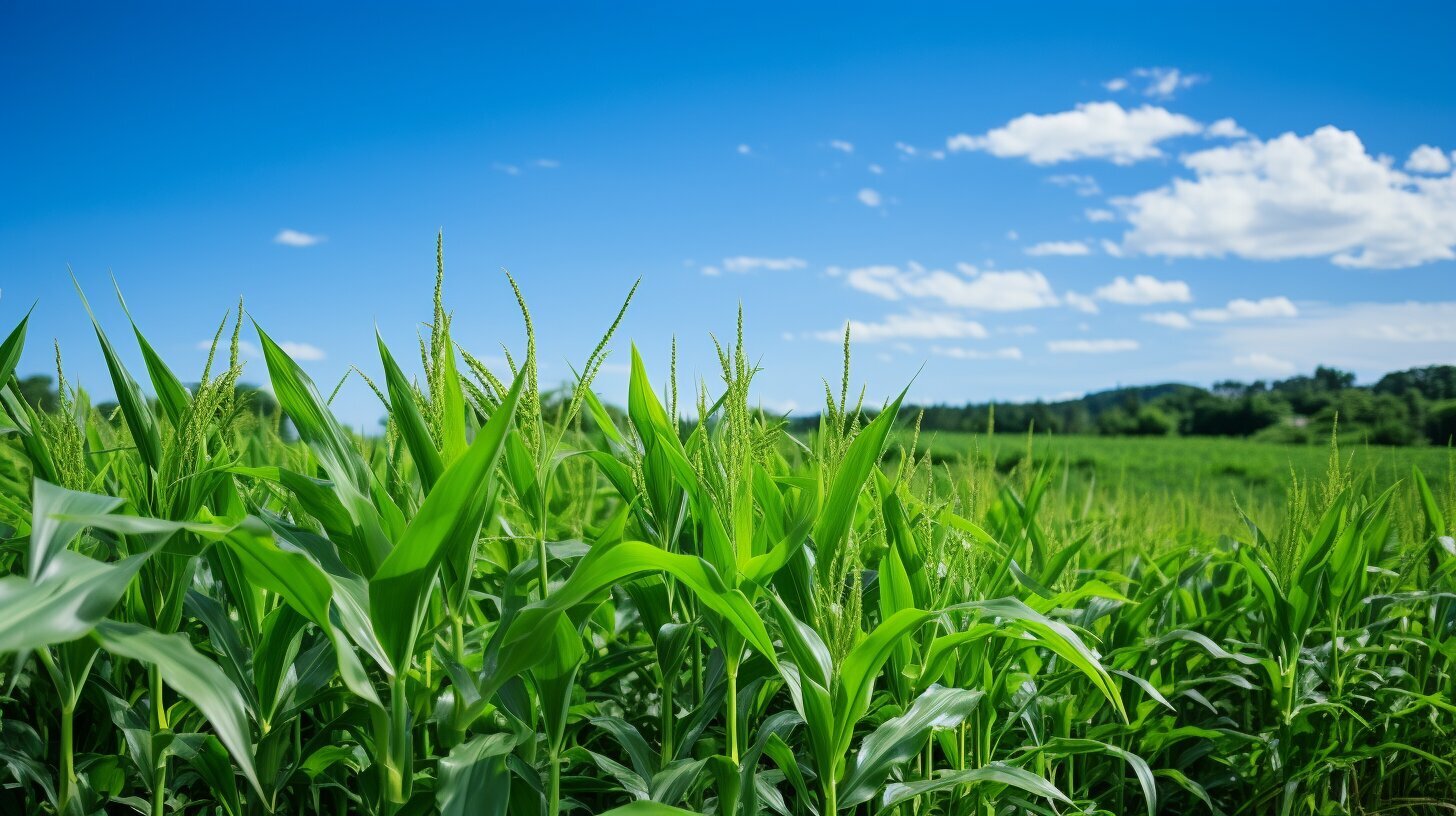Are you tired of only enjoying the fresh flavors of wild berries during their limited season? Do you wish you could preserve their goodness and enjoy them all year round? Look no further! In this comprehensive guide, we will explore various methods and techniques for preserving wild berries so that you can savor their flavors all year long.
Whether you are a seasoned forager or a beginner in the world of berry-picking, this guide will provide you with easy step-by-step instructions on how to properly preserve your precious harvest. From selecting the right berries to choosing the best preservation methods, this guide has got you covered.
Disclosure: When you buy through links on our site, we may earn an affiliate commission.
Key Takeaways
- Preserving wild berries allows you to enjoy their fresh flavors all year round.
- Choosing the right berries and properly preparing them is crucial for successful preservation.
- There are various preservation methods to choose from, including freezing, canning, and dehydrating.
- Proper storage is essential to maintain the quality of preserved berries.
- Preserved wild berries can be used in a variety of dishes, from syrups and sauces to cocktails and desserts.
Why Preserve Wild Berries?
Before exploring the various berry preservation methods, it’s crucial to understand the reasons why preserving wild berries can be beneficial. By preserving wild berries, you can:
- Enjoy their flavors outside of their limited season
- Reduce waste by utilizing all parts of the berries
Preserving wild berries through different methods allows you to appreciate their unique taste and nutritional benefits long after the harvest season has ended. Depending on the preservation method you choose, you can also use wild berries in a variety of recipes, from fruity jams and jellies to infused alcohol and sauces, adding a burst of flavor to your meals and drinks.
The Advantages of Different Berry Preservation Methods
There are various ways to preserve wild berries, each with its own advantages depending on your preferences and needs.
| Preservation Method | Advantages |
|---|---|
| Freezing | Quick and easy, preserves texture and flavor, perfect for smoothies and baking |
| Canning | Long shelf life, versatile, ideal for jams, jellies, and pickled berries |
| Dehydrating | Compact storage, great for hiking and camping, can be rehydrated for cooking and snacking |
| Infusing in alcohol | Creates unique flavors and cocktails, perfect for entertaining and gifting |
| Creating preserves | Uses natural pectin, no artificial additives, ideal for spreading on toast, crackers, and cheese |
As you can see, there are plenty of options to choose from when it comes to preserving wild berries. Whatever method you choose, make sure to follow the proper techniques closely to ensure the best possible results.
Now that you know the advantages of preserving wild berries, let’s move on to the first step in the process: selecting the right berries.
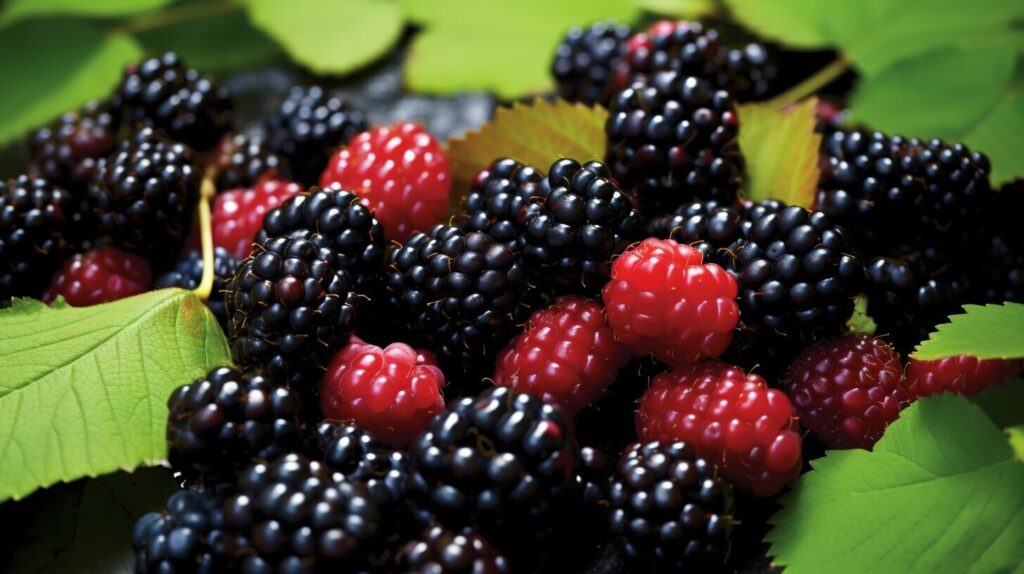
Selecting the Right Berries
Preserving fresh wild berries requires selecting the best berries available. Follow these wild berry preservation tips to choose the freshest, ripest berries for optimal flavor and longevity.
Identifying Wild Berries
Wild berries come in different shapes, sizes, and colors. It’s essential to identify them correctly to avoid picking poisonous berries. Use a reliable field guide or consult a local foraging expert to help you identify the berries you want to preserve.
Checking for Ripeness
Look for berries that are plump, firm, and uniform in color. Ripe berries should come off the plant easily but not crumble in your hand. Avoid berries that are mushy, bruised, or discolored.
Avoiding Berries Past Their Prime
Overripe or underripe berries will not preserve well. Be cautious of berries that are starting to shrivel or turn white, as they may be past their prime. Choose berries that are in their prime for optimal preservation results.
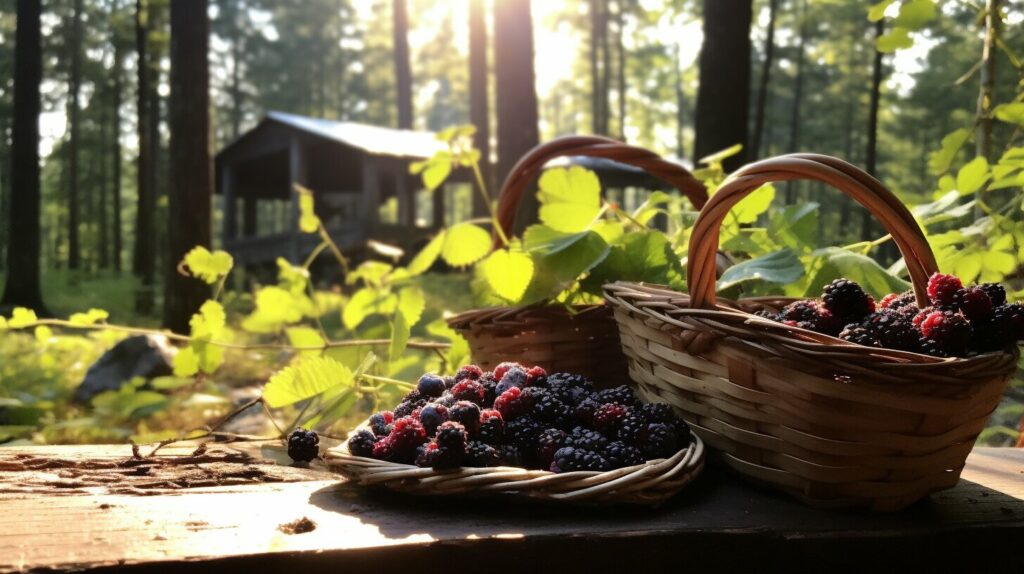
| Berry Name | Best Time to Pick |
|---|---|
| Blackberries | Midsummer to Early Autumn |
| Blueberries | Late Summer to Early Fall |
| Raspberries | Early Summer to Early Fall |
| Strawberries | Early to Midsummer |
Tip: If you plan to preserve berries, start with the freshest and ripest ones you can find. Don’t be tempted to pick too many berries at once since you need to preserve them as soon as possible to maintain their freshness.
Preparing the Berries
Once you have selected the freshest wild berries, it is essential to prepare them correctly for the preservation process. Proper preparation ensures the longevity and flavor of the berries. Here are the steps to follow:
- Clean the berries: Wash the berries gently in cold water to remove any dirt or debris. Be careful not to crush or bruise them.
- Sort the berries: Remove any damaged or overripe berries, along with leaves and stems. Sort the berries by size and ripeness if necessary.
- Remove any unwanted parts: Cut off the stems and remove the hulls or other unwanted parts depending on the type of berry.
The prepared berries are now ready for preservation.
Wild Berry Recipes to Try During the Preservation Process
While preparing your berries, why not try out some wild berry recipes to enjoy them fresh? Here are a few ideas:
- Wild Berry Smoothie: Blend fresh wild berries with yogurt, milk, and honey.
- Wild Berry Parfait: Layer fresh wild berries with Greek yogurt and granola.
- Wild Berry Salad: Toss fresh wild berries with leafy greens, goat cheese, and a balsamic vinaigrette.
These easy, healthy, and delicious recipes will make the preservation process even more enjoyable.
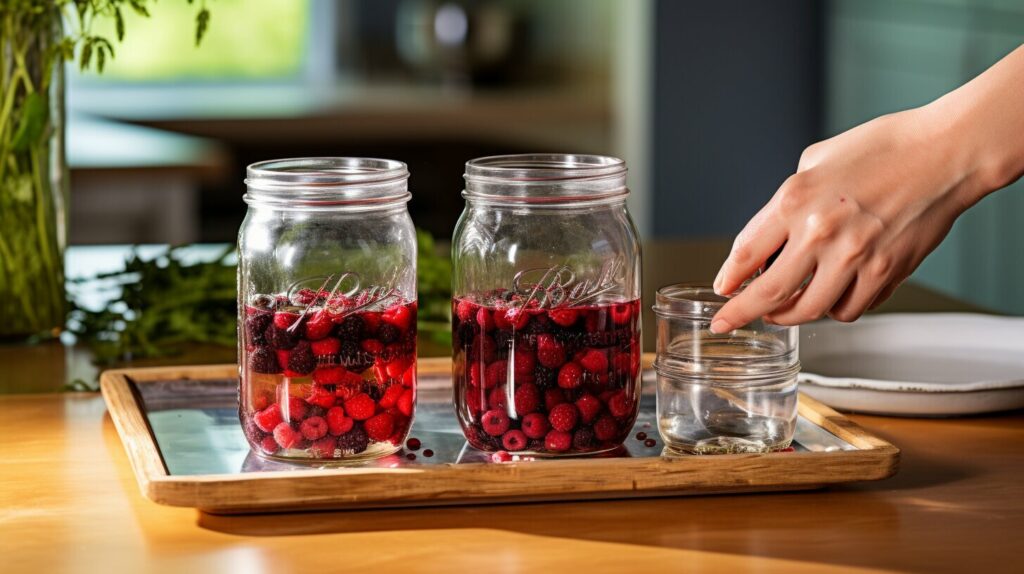
“Proper preparation ensures the longevity and flavor of the berries.”
Freezing Wild Berries
Freezing is one of the easiest and most popular methods for preserving wild berries. Not only is it a convenient way to save your harvest, but it also locks in the fresh flavor and nutrients of the berries. Follow these simple steps to freeze your wild berries:
- Selecting Fresh Berries: Before freezing your berries, make sure to select only the freshest berries. Remove any damaged or overripe berries. Rinse the berries thoroughly with cold water and dry gently with a paper towel.
- Prepare the Berries: Remove any stems or leaves from the berries and cut them into smaller pieces, if desired. You can also leave them whole.
- Packaging: Place the berries in airtight freezer bags or containers. Be sure to label the bags or containers with the date and type of berry so that you can easily identify them later on.
- Freezing: Place the bags or containers in the freezer. Keep them in a single layer to ensure that they freeze quickly and evenly.
Here are some additional tips for freezing wild berries:
- Prevent Freezer Burn: To prevent freezer burn, make sure to remove as much air as possible from the freezer bags or containers. This can be done by using a vacuum sealer or by pressing the air out of the bag before sealing it.
- Storage: Frozen berries can be stored for up to six months. To maintain their quality, it is best to use them within three months.
- Thawing: To thaw the berries, simply remove them from the freezer and let them sit at room temperature for a few hours or overnight in the refrigerator.
Freezing is an excellent way to preserve wild berries for use in smoothies, baked goods, and other recipes. It is also a great way to enjoy the taste of summer all year round.
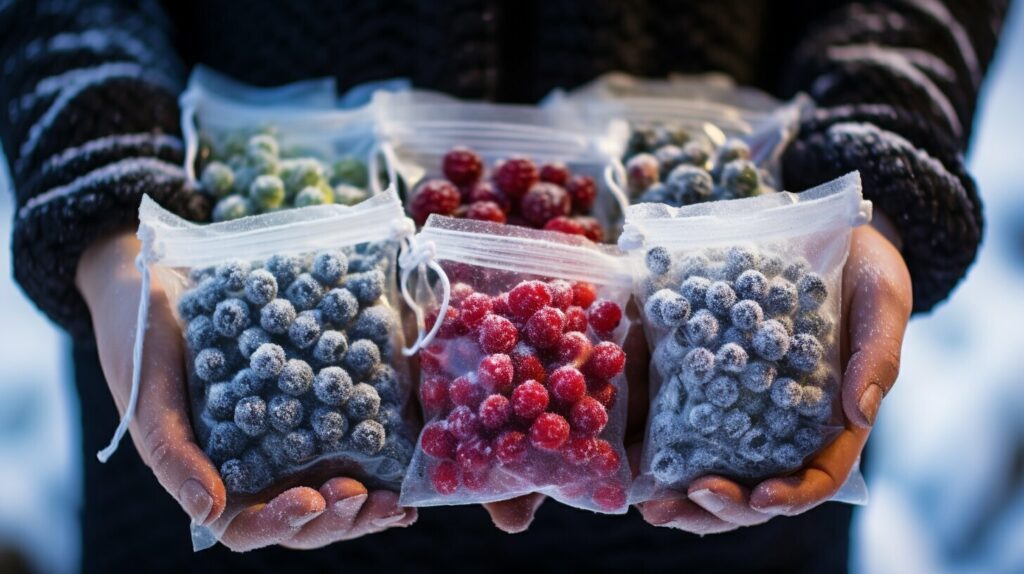
Canning Wild Berries
If you’re looking for a traditional and effective way to preserve wild berries, canning is an excellent option. Canning involves heating berries to a high temperature, which kills any bacteria or yeast, and seals them in jars to prevent contamination.
Before beginning the canning process, it’s important to ensure that you have all the necessary equipment. You will need a large pot for sterilizing jars, jars with lids and bands, a jar lifter, a wide-mouth funnel, and a lid wand.
Sterilizing Jars
The first step in canning wild berries is to sterilize your jars. This is important to kill any bacteria or yeast that may be present in the jars. There are two ways to sterilize jars:
- Place clean jars and lids in a large pot of boiling water for 10 minutes. Remove with tongs or a jar lifter and place on a clean towel to dry.
- Place clean jars and lids in an oven preheated to 225°F for 10 minutes. Remove with oven mitts and place on a clean towel to cool.
Preparing Berries for Canning
Once your jars are sterilized, it’s time to prepare your berries for canning. Wash and rinse your berries thoroughly, removing any stems, leaves, or other debris.
Berries should be packed firmly in the jars, leaving about 1/2 inch of headspace at the top. Add any desired sweeteners, like sugar or honey, and hot water or syrup to the jar, leaving the recommended headspace for the specific recipe you are using.
Sealing Jars
To seal your jars, wipe the rim of the jar with a clean, damp cloth to remove any residue. Place the lid on the jar, securing it with a band until finger-tight.
Place your jars in the boiling water, making sure the jars are covered with at least one inch of water. Bring the water to a rolling boil and process for the recommended time in your recipe, usually around 10-15 minutes.
After processing, use your jar lifter to remove the jars from the water and place them on a clean towel to cool. Once the jars have cooled, check that each jar has sealed properly by pressing the center of the lid. If it does not pop back, the jar is properly sealed.
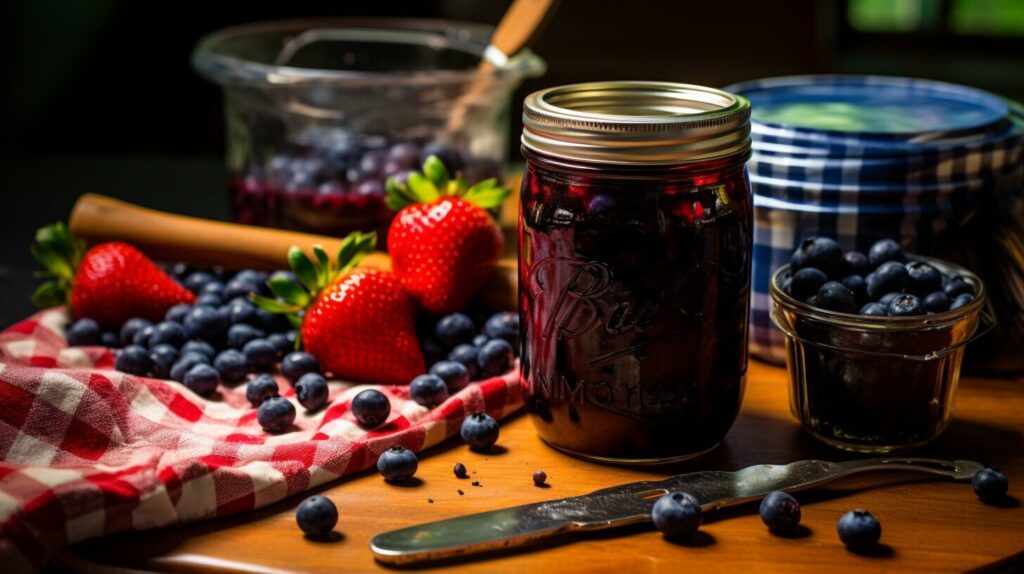
With these wild berry preservation techniques, you can enjoy your freshly harvested berries all year long. Whether you prefer freezing, canning, or dehydrating, each preservation method offers unique benefits for storing and savoring your wild berries.
Dehydrating Wild Berries
If you’re looking for a way to preserve your wild berries that’s convenient and takes up minimal space, dehydrating them could be the answer. Dehydrated berries can last for up to a year if stored in an airtight container in a cool, dark place.
To begin the dehydrating process, start by washing and drying your berries thoroughly. Once your berries are clean, remove any stems or leaves, and slice them into small, uniform pieces. For example, if you’re dehydrating blueberries, cut them in half. Strawberries should be sliced into quarters, and raspberries should be left whole.
There are two primary methods for dehydrating berries: air-drying and using a food dehydrator.
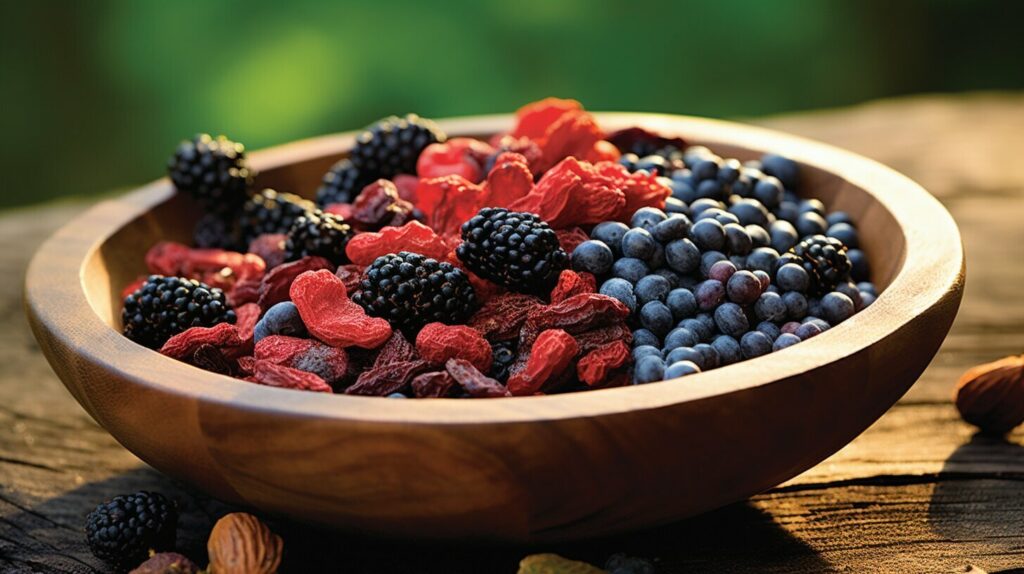
Air-drying Method
To air-dry your berries, place them in a single layer on a baking sheet or wire rack, with enough space between each berry to allow for air circulation. Place the sheet or rack in a warm, dry place with good air circulation, such as near a window or fan. Allow the berries to dry completely, which can take several days to a week depending on the humidity levels in your area.
Food Dehydrator Method
A food dehydrator offers a faster and more consistent way to dehydrate your berries. Spread your berries in a single layer on the dehydrator trays, making sure they don’t touch. Set the temperature to 135°F (57°C) and let the berries dehydrate for 6-12 hours, or until they are dry and slightly chewy.
Regardless of whether you choose to air-dry or use a dehydrator, be sure to check your berries frequently to ensure they are drying evenly and not developing mold. Berries that are fully dehydrated will be dry to the touch and slightly pliable, with no visible moisture inside.
Creating Wild Berry Syrups and Sauces
If you are looking for a way to add a burst of flavor to your dishes, wild berry syrups and sauces can be a great option. They are easy to make and can be used in a variety of ways, from drizzling over pancakes to using as a glaze for meats. Here are some simple wild berry syrup and sauce recipes to try:
Wild Berry Syrup Recipe
Ingredients:
- 2 cups of fresh wild berries
- 1 cup of water
- 1 cup of sugar
Directions:
- In a saucepan, combine the berries, water, and sugar
- Bring the mixture to a boil and then reduce heat to a simmer
- Simmer for 10-15 minutes or until the mixture has thickened
- Remove from heat and strain the syrup through a fine mesh sieve to remove any seeds or pieces of fruit
- Allow the syrup to cool before transferring it to a jar or bottle
This syrup can be stored in the refrigerator for up to a month and can be used as a topping for pancakes, waffles, ice cream, and more.
Wild Berry BBQ Sauce Recipe
Ingredients:
- 1 cup of ketchup
- 1/2 cup of apple cider vinegar
- 1/4 cup of brown sugar
- 2 tablespoons of Worcestershire sauce
- 1 tablespoon of Dijon mustard
- 1/4 teaspoon of garlic powder
- 1/4 teaspoon of onion powder
- 1/2 cup of fresh wild berries
Directions:
- In a saucepan, combine all of the ingredients except for the berries
- Bring the mixture to a simmer over medium heat
- Add the berries to the saucepan and continue to simmer for 5-10 minutes or until the mixture has thickened
- Remove from heat and let cool for a few minutes
- Puree the sauce using an immersion blender or transfer it to a blender and puree until smooth
- Transfer the sauce to a jar or bottle and store in the refrigerator for up to 2 weeks
This sauce is perfect for brushing onto grilled meats or using as a dipping sauce for chicken nuggets or fries.
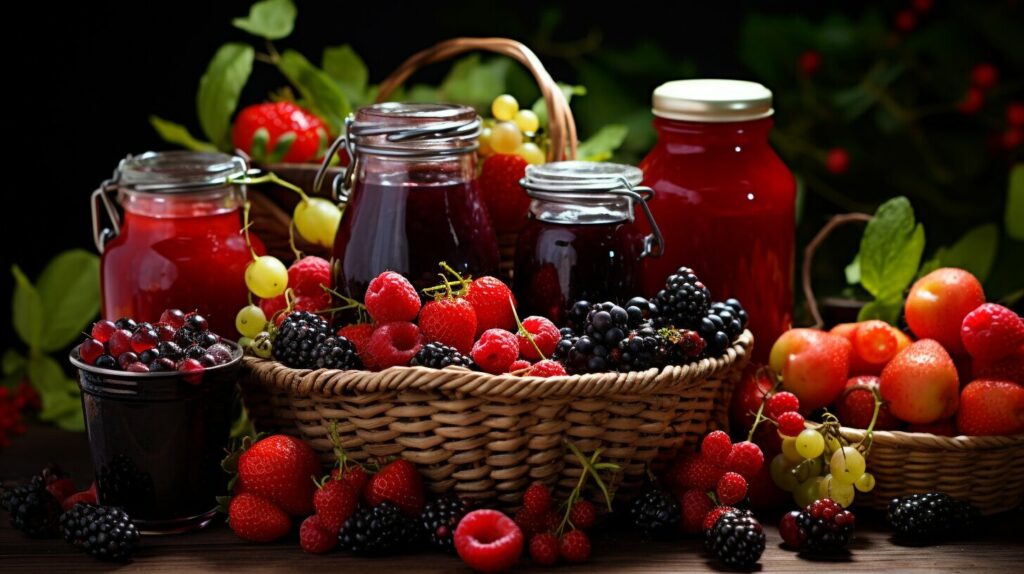
Tip: Experiment with different types of wild berries to create unique flavor combinations for your syrups and sauces.
Infusing Wild Berries in Alcohol
If you’re looking for a unique way to showcase your preserved wild berries, try infusing them in alcohol. This process involves adding your favorite berries to a spirit and allowing them to steep over time, resulting in a rich and flavorful infusion that can be enjoyed on its own or used in cocktails.
The first step in infusing wild berries is to select your spirit. Vodka, rum, and gin are all popular choices for berry infusions. Once you have your spirit, wash your berries and remove any stems or leaves. You can leave the berries whole or chop them into smaller pieces to increase the surface area for infusion.
Next, place the berries in a clean glass jar and add the spirit. For every cup of berries, use 2-3 cups of spirit. Seal the jar tightly and store it in a cool, dark place to allow the flavors to meld. The infusion time can vary depending on the type of berries and spirit, but a general guideline is 1-2 weeks.
After the desired infusion time has passed, strain the mixture through a fine mesh strainer or cheesecloth to remove any solids. You can sweeten the infusion with a simple syrup if desired, but be sure to taste the infusion before adding any sweeteners to ensure a balanced flavor.
Your infused spirits can be stored in sealed glass bottles in a cool, dark place for up to six months. They make great gifts for friends and family, or the perfect addition to your next cocktail party. Try using your wild berry infusion in a classic gin and tonic, or mix it with soda water and a squeeze of lime for a refreshing summer drink.
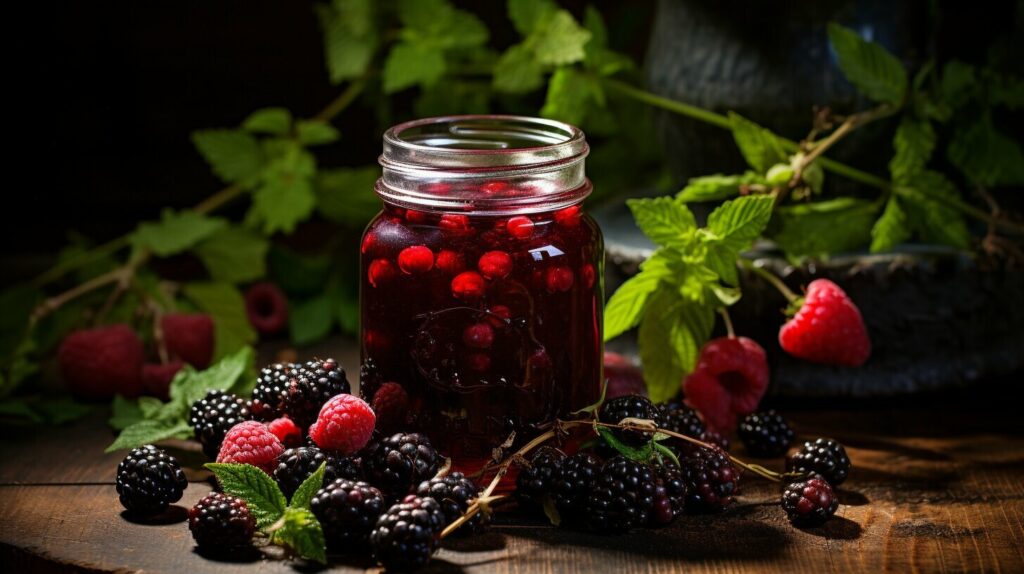
Tip: For an extra burst of flavor, try adding other ingredients to your infusion, such as citrus zest, herbs, or spices.
Creating Wild Berry Preserves
Preserving wild berries as jams, jellies, and fruit spreads is a traditional and delicious way to enjoy their flavors throughout the year. With the right berry preservation methods and wild berry recipes, you can create preserves that are not only long-lasting but also bursting with flavors.
Choosing the Right Berries
The key to creating delicious wild berry preserves is selecting the freshest and ripest berries. Choose berries that are firm, plump, and fully ripened. Avoid berries that are too soft or discolored, as they may have started to spoil. Wash the berries thoroughly and remove any stems, leaves, or other debris before beginning the preserving process.
The Right Method for Each Berry
Not all berries are created equal, and not every berry preserves the same way. For example, some berries have high natural pectin levels, such as elderberries and currants, which makes them perfect for making jellies. Others, like strawberries, require the addition of pectin to achieve the right consistency.
It is essential to follow the right method for each berry to ensure the best result. Make sure to consult expert wild berry recipes that are specifically designed for the type of berry you are preserving.
The Right Sweetener
The choice of sweetener can make a significant difference in the taste and texture of your wild berry preserves. While sugar is the most common sweetener for berry preserves, you can also use honey, maple syrup, or agave nectar for a healthier option.
If you are substituting sugar, make sure to adjust the recipe to maintain the right consistency and to prevent spoilage.
Proper Sealing Techniques
Sealing your wild berry preserves correctly is crucial for maintaining their freshness and flavor. Make sure to sterilize your jars and lids before using them, and fill the jars with the hot preserves while they are still hot. Leave a ¼ inch of space at the top of the jars, and remove any air bubbles before sealing.
Process the filled jars in a water bath canner or follow the recipe instructions for the right processing time.
Storing Your Wild Berry Preserves
Your properly sealed wild berry preserves can be stored for up to a year in a cool, dry place away from direct sunlight. Once you have opened a jar, store it in the refrigerator and consume it within two weeks.
Enjoy your delicious creations on toast, scones, or paired with your favorite cheese for a delicious snack or breakfast treat!
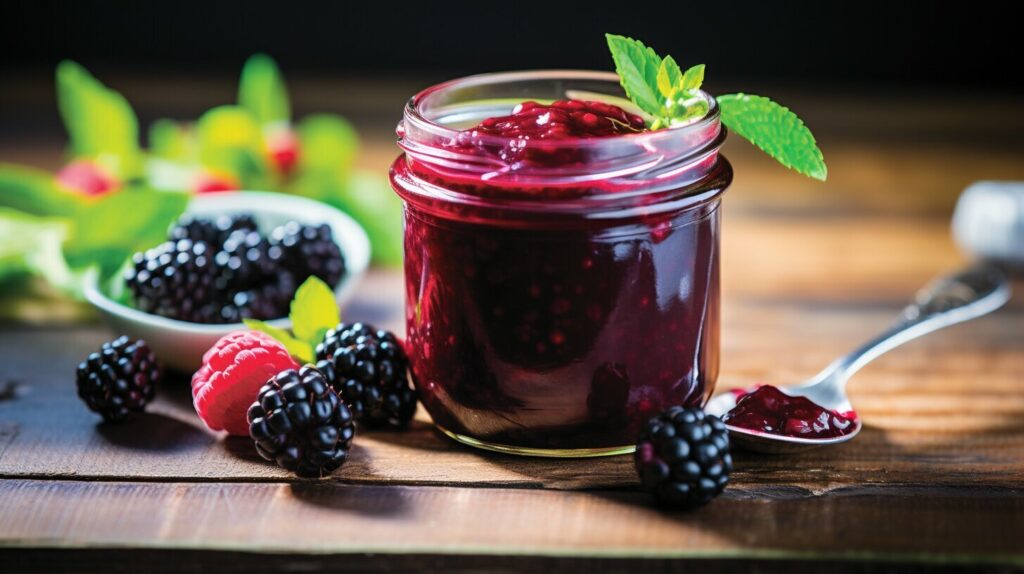
Storing and Enjoying Preserved Wild Berries
Now that you have successfully preserved your wild berries, it’s time to store them properly so that you can savor their fresh flavors all year round. Here are some tips to help you store and enjoy your preserved wild berries:
Freezing Wild Berries
If you have frozen your wild berries, make sure to store them in airtight containers or freezer bags to prevent freezer burn. Label the containers with the date and type of berries, so you can easily identify them later. Frozen berries can be stored for up to 12 months in the freezer.
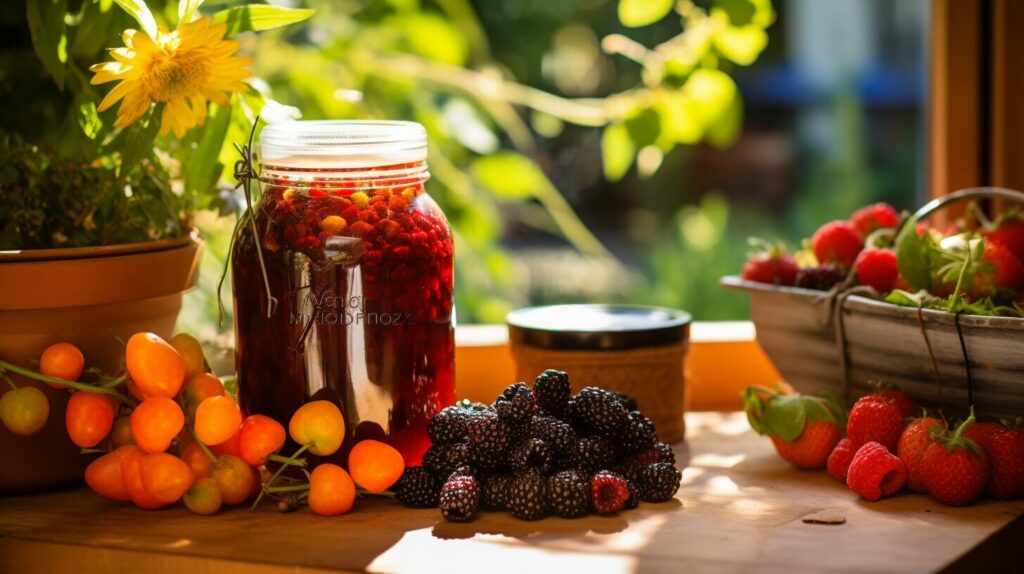
Canning Wild Berries
Canned wild berries should be stored in a cool, dry place away from direct sunlight. Be sure to check the seals on the jars to ensure that they are airtight. Canned preserves can be stored for up to 2 years.
Dehydrating Wild Berries
If you have dehydrated your wild berries, ensure that they are completely dry before storing them in airtight containers or bags. Store the containers in a cool, dry place away from moisture and direct sunlight. Dehydrated berries can last up to 6 months.
Infusing Wild Berries in Alcohol
If you have infused your wild berries in alcohol, store the bottles in a cool, dark place away from direct sunlight. Infused spirits can last for several months to a few years, depending on the type of berries and alcohol used.
Enjoying Preserved Wild Berries
Preserved wild berries can be used in a variety of ways, such as adding them to yogurt, oatmeal, smoothies, or baking them into pies and cakes. Experiment with different recipes to discover new and delicious ways to enjoy your preserved wild berries.
By following these simple storage tips, you can enjoy the fresh flavors of your preserved wild berries all year round.
Conclusion
Now that you have learned the art of preserving wild berries, you can enjoy fresh, flavorful berries all year round. Remember to select the freshest berries, follow the preservation methods that suit your preferences, and store your preserved berries properly for optimal enjoyment.
Preserving wild berries is not only a way to savor their flavors, but it also helps reduce waste by utilizing all parts of the berries. Whether you choose to freeze, can, dehydrate, or infuse your berries in alcohol, each method has its unique benefits and can be tailored to your taste.
By preserving wild berries, you are not only preserving their taste but also preserving a piece of nature’s bounty. So go ahead, gather some fresh wild berries, and start preserving them today!
FAQ
Why should I preserve wild berries?
Preserving wild berries allows you to enjoy their flavors outside of their limited season and reduces waste by utilizing all parts of the berries.
How do I select the right berries for preservation?
Choose the freshest, ripest berries by identifying wild berries, checking for ripeness, and avoiding berries that may be past their prime.
How do I prepare wild berries for preservation?
Properly clean, sort, and remove any unwanted parts from the berries before preserving. Try some delicious wild berry recipes during the preparation process.
What is the process for freezing wild berries?
We will explain the step-by-step process of freezing berries, including optimal packaging techniques and storage guidelines. Tips on preventing freezer burn will also be shared.
How do I can wild berries?
Canning is a traditional method of preservation. We will cover the canning process, including sterilization, proper sealing techniques, and different types of preserves.
What are the methods for dehydrating wild berries?
Dehydrate berries using various methods, such as air drying and using a food dehydrator. Learn about the ideal moisture content and storage conditions for dehydrated berries.
How can I make wild berry syrups and sauces?
Explore recipes and techniques for making delicious syrups and sauces using preserved wild berries. Receive tips on storing and using these flavorful additions.
How do I infuse wild berries in alcohol?
Discover the process of infusing different spirits with wild berries, including vodka, rum, and gin. Create unique and flavorful infused spirits for cocktails or enjoyment on their own.
How can I create wild berry preserves?
Learn the process of creating different types of preserves, such as jams, jellies, and fruit spreads. Tips on achieving the right consistency and sealing the preserves will be shared.
How should I store and enjoy preserved wild berries?
Properly store different types of preserved berries, including frozen berries, canned preserves, dehydrated berries, and infused spirits. Get ideas on how to enjoy your preserved wild berries throughout the year.

